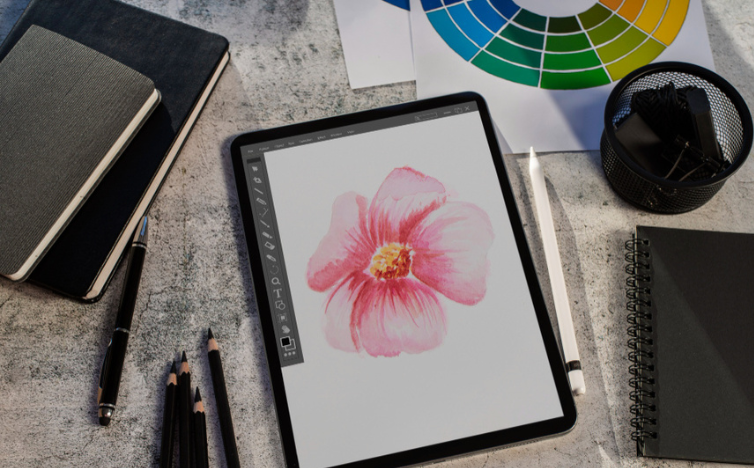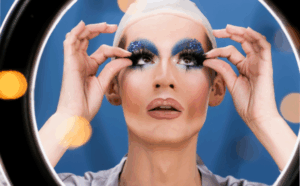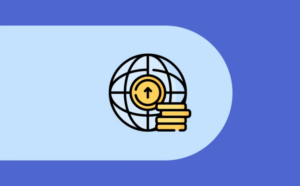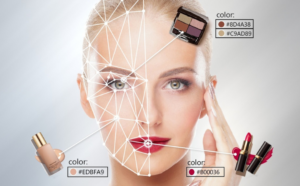In the ever-transforming landscape of digital art and e-commerce visuals, the advent of AI-powered sketch to image AI tools has been no less than revolutionary. These tools serve a diverse range of creators, including hobbyists looking for unique ways to bring their paintings to life and professional designers aiming to optimize their output. But with a variety of options available, how do you know which tool is right for your needs?
In this comprehensive guide, we’ll walk you through the top five Sketch-to-Image AI rendering tools, highlighting their features, pros, and cons, to equip you with the knowledge you need to make an informed choice.
Table of Contents
What is Sketch to Image AI Rendering?
Before delving into the specifics, it’s important to understand the kind of transformation these AI tools are bringing to the table. They take basic sketches drawn by hand or through software and convert them into more polished, detailed images that accurately convey a creator’s vision. Each tool comes with its unique selling points, but they all share the common goal of enhancing the creative process and output.
To simplify this guide, we’ll be focusing on OpenArt, PromeAI, DALL·E, Vizcom, SketchAI, and Scribble to Art Fabrie AI. These are the leaders in the AI sketch-to-image field, supported by advanced technology and a history of improving digital content.
6 Best Sketch to Image AI Rendering Tools

OpenArt
OpenArt stands out with its user-friendly interface and versatile features, serving diverse industries from architecture to fashion.

PromeAI
Renowned for its emphasis on aesthetics, PromeAI excels in transforming basic concepts into visually stunning creations, be it in fashion or architectural sketches.
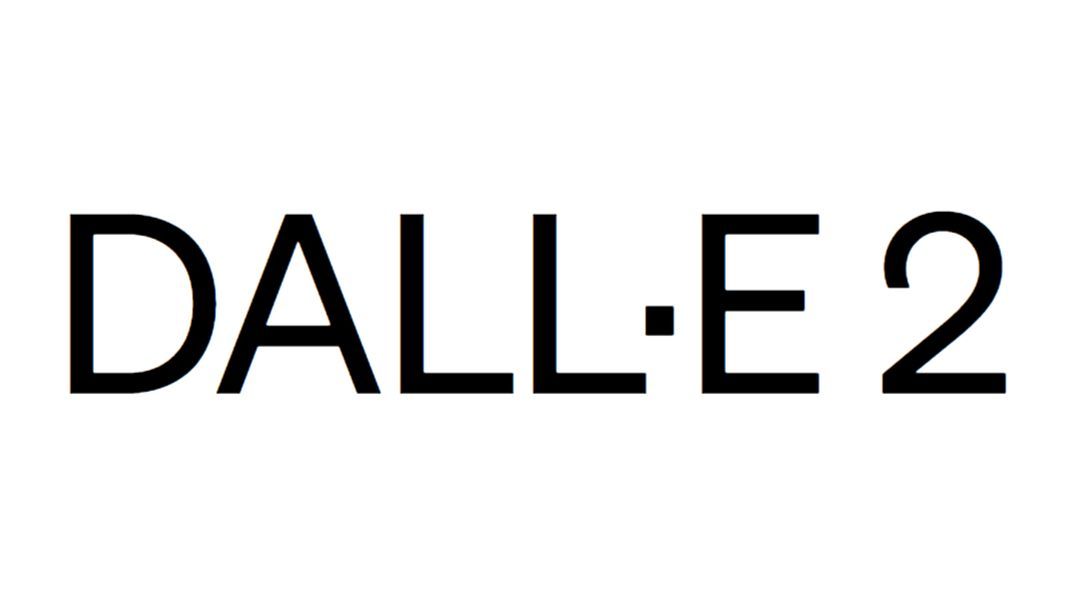
DALL·E
A pioneer in sketch-to-image AI, DALL·E, developed by OpenAI, utilizes GAN technology to revolutionize the generation of images from textual descriptions and sketches.

Vizcom
Recognized for its focus on translating ideas into visually impactful images, Vizcom is a preferred tool for marketers seeking quick and attention-grabbing visual content.
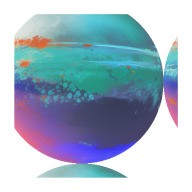
SketchAI
Simple yet effective, SketchAI is a designer-friendly tool that efficiently transforms sketches into finished designs, accommodating various design styles seamlessly.

Scribble To Art
Offering a comprehensive creation process, Scribble to Art Fabrie AI is applauded for its user-friendly platform catering to both novice and experienced designers.
OpenArt: Your Portal to Creativity
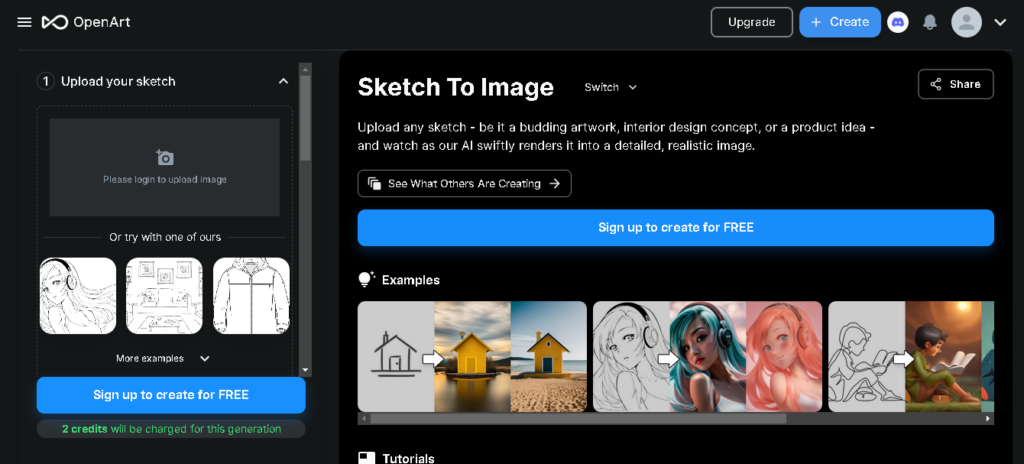
OpenArt shines with its intuitive interface and impressive set of features. It caters to a wide array of industries, from architecture and interior design to fashion and product development. Its standout feature lies in its ability to handle complex sketches with ease, retaining essential details while adding visual depth.
OpenArt is really flexible because it offers lots of different art styles, like realistic, anime, digital art, and even 3D images. It suits different artistic tastes and project needs, letting you make up to 16 different pictures, so you can be really creative. You can use the basic features for free, but if you need more options, there are subscription plans available.
Features:
- A variety of rendering styles and filters, including watercolor, charcoal, and oil painting
- Advanced color mixing capabilities for custom palettes
- Live preview feature to see the changes in real-time before finalizing
- Easy upload and customization for sketches
- Optional descriptions for better AI understanding
- Control over artistic expression with adjustable creativity settings
- Various art styles and color themes available
- Up to 16 different images generated per prompt
- Free basic models with optional paid subscriptions
- Extra tools for creative options and transforming stock images
Pros and Cons
PromeAI: Mastering Aesthetics
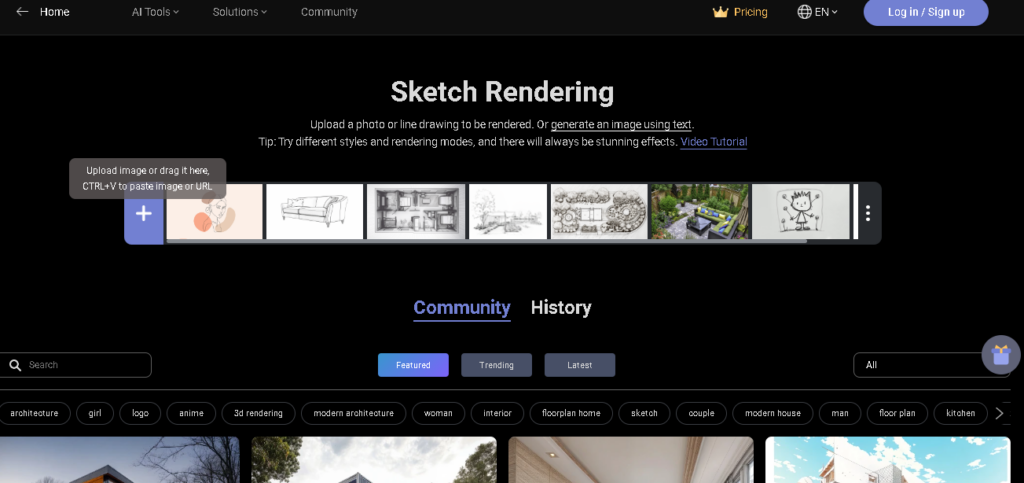
People really like PromeAI because it pays a lot of attention to making things look good. Whether you’re turning a basic idea into a cool fashion drawing or making a simple building sketch look real, PromeAI is great at making the original sketch better.
PromeAI does a really good job of making pictures that look just like the original sketches. It gets the textures and lighting just right, so it looks natural. You can try out different materials and settings quickly and see how they look right away. Plus, there’s a special skylight feature that makes the light and shadows look realistic, making the pictures feel more real and lifelike.
Features:
- Advanced lighting and shadow effects for a realistic touch
- Extensive library of materials, including fabric textures and metal finishes
- Intuitive AI algorithms that learn from user behavior to improve recommendations over time
- Turn 3D models or sketches into realistic pictures for different design needs
- Accessible on computers and phones, no need to download
- Realistic images with accurate materials and lighting
- See design changes quickly with real-time processing
- Special lighting effects and shadows with Skylight simulation
- Make as many images as you want for free, and download high-quality ones with an account
Pros and Cons
DALL·E: The Unseen Imagination
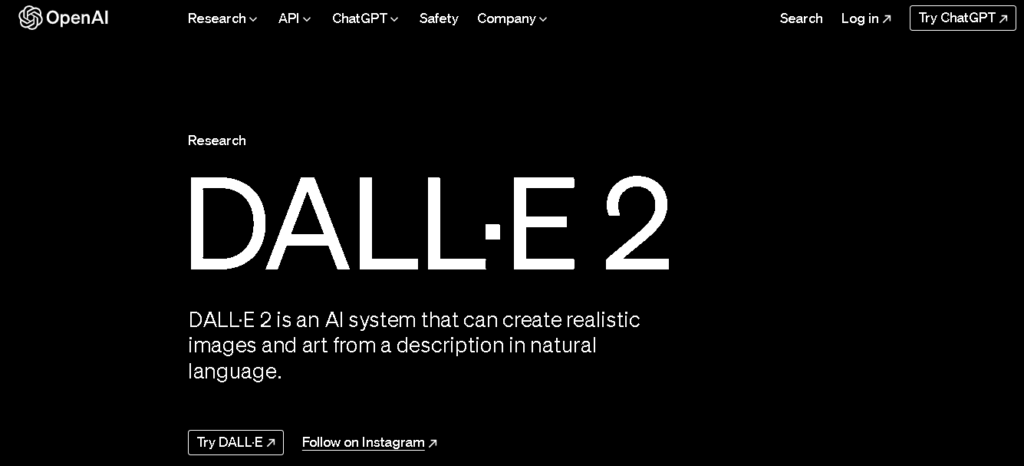
Created by OpenAI, DALL·E is at the forefront of the sketch-to-image AI revolution. It takes a unique approach by utilizing a GAN (Generative Adversarial Network) to generate images from textual descriptions and sketches. This tool is famous for its ability to bring unseen concepts to life.
Features:
- Ability to generate high-quality images from sketches or text descriptions
- Endless possibilities for creating unique and imaginative visuals
- Advanced editing capabilities with layering and compositing options
- Versatility in Styles and Themes
- Customization Options
- High-Quality Output
Pros and Cons
Vizcom: The Visual Communicator
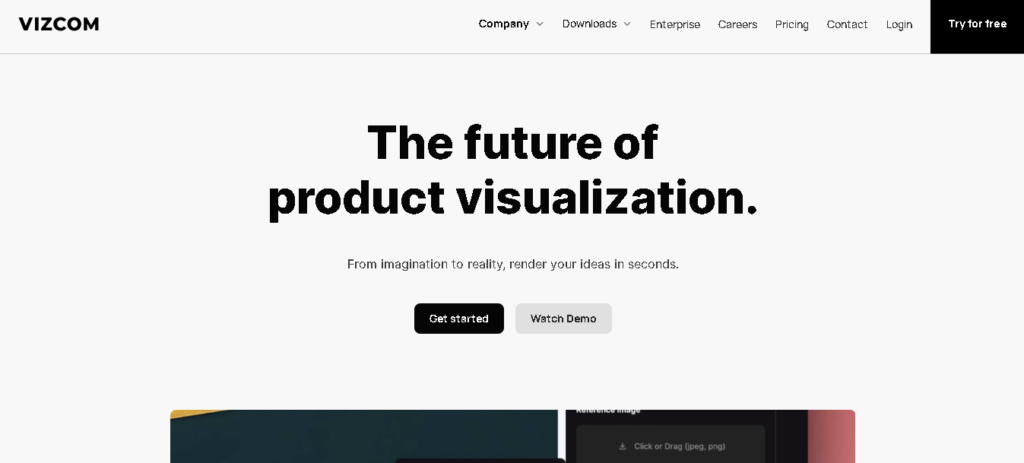
Vizcom is popular because it focuses on making ideas into pictures that are really good at getting messages across. It’s great for marketers because it quickly makes ideas into eye-catching pictures. One cool thing about it is how it arranges things in a way that not only looks nice but also makes the message clear.
This platform does more than just make basic pictures. It has cool features like Prompts, Live Render, 3D Paint, and lots of Drawing Tools. They’re all made to make designing easier and more fun. Vizcom takes security seriously, making sure your data is safe all the time. You can use it on iPads, laptops, and computers, so it’s easy to use no matter where you are.
Features:
- A variety of templates and preset layouts for social media posts, banners, and infographics
- Options to customize color schemes and branding elements
- Draw directly on the platform or upload different types of art
- Use creative tools like Prompts, Live Render, 3D Paint, and Drawing Tools
- Keeps your data safe with top-notch security
- Works on different devices
- Collaborate with Teams, Projects & Folders for shared work
- Helps you do design tasks faster, saving lots of time
- Integrations with popular marketing tools like Canva and MailChimp
Pros and Cons
Check Also: AI Tools For Image Resizing
SketchAI: The Designer’s Ally
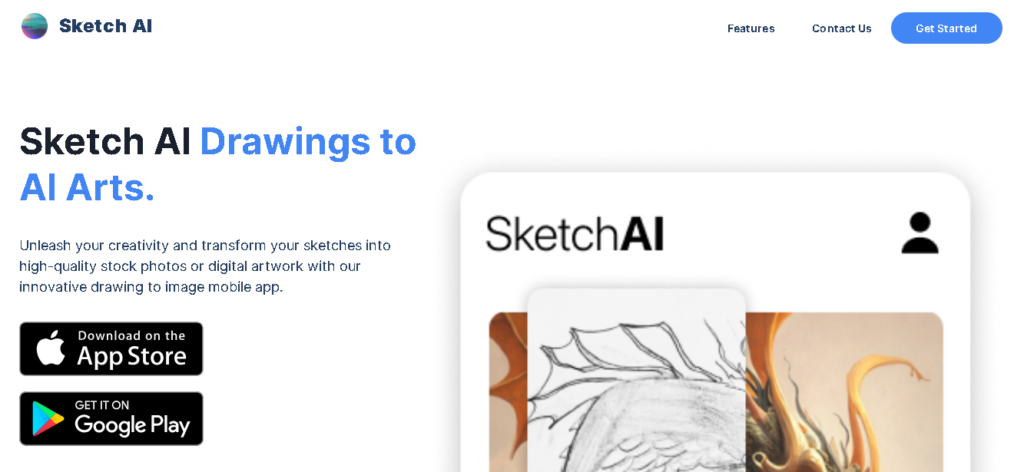
SketchAI is simple yet effective. It’s great for designers who want a tool that’s easy to use and gets the job done quickly. It works well with different design styles and makes it easy to turn sketches into finished designs.
This app makes it easy to go from drawing to showing off your work. You can draw right in the app or upload drawings you already have. Then, the AI in the app turns them into realistic or really cool pictures. You can easily save or share these pictures on social media.
Features:
- User-friendly interface with minimal learning curve
- Quick rendering capabilities for fast turnaround times
- Advanced image enhancement tools for fine-tuning final images
- Draw directly using simple tools or upload images to the platform.
- AI technology transforms sketches into realistic pictures or artistic styles.
- Use different brushes, colors, and filling tools for a fun drawing experience.
- Choose presets to make your sketches look like famous artists’ styles.
- Make lots of different versions of a sketch with user prompts.
- Free to use with extra features you can buy in the app.
Pros and Cons
Scribble to Art Fabrie AI
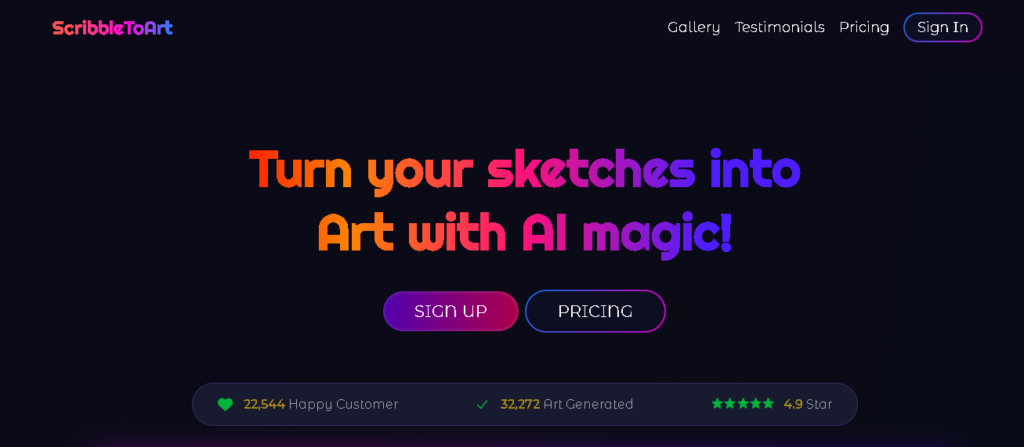
Scribble to Art Fabrie AI offers a comprehensive creation process. Its user-friendly platform is lauded for its ability to cater to both rookie and experienced designers. The tool’s automation features and large library of design assets ensure a quick and efficient creation process.
Features
- Turns sketches and text prompts into 3D scenes.
- Lets you type in details like building type and key features.
- Shows visualization options fast.
- Helps you explore lots of ideas quickly.
- Free for personal or school use.
- Makes it easy to be creative without needing advanced skills.
- Helps refine initial ideas into better designs.
Pros and Cons
The Impact on E-Commerce and Design
Sketch-to-image AI tools have made e-commerce visuals much better. They go beyond regular stock images by letting businesses create their own unique and customized visuals. These tools help online stores tell their story and connect with customers using more real-looking pictures.
Sketch-to-image AI tools have made it possible for businesses to create their own pictures instead of using the same ones everyone else does. This helps them show their products in a more unique way that fits their brand. Even small businesses can use these tools to make professional-looking pictures without spending a lot of money. This has made the competition between businesses more fair, and it’s led to more creative and interesting designs online. These tools aren’t just for e-commerce though; they’re also used in advertising, marketing, and branding. They help designers and marketers make pictures quickly and try out different ideas. This means businesses can keep up with what people like and stay ahead of the competition. Overall, sketch-to-image AI tools are super important for making online shopping better and helping businesses stand out.
Conclusion: Transforming the Creative Process
The sketch-to-image AI tools we’ve explored are not just about automation.These tools aim to help creators bring their ideas to life, but it’s important to remember that the artist’s touch is what makes the magic happen. These tools are bridges that connect imagination to innovation, and ultimately, they are in service to the human capacity for creativity.
No matter if you’re experienced or just starting out, there’s a tool that can make your work even better. Try different tools to see which one fits your needs best. AI is changing the digital world in exciting ways, so find the right tool and see what you can create!
FAQs
What does sketch rendering mean?
Sketch rendering means using AI software to transform simple sketches into detailed digital pictures.
How do these tools handle different sketch styles and complexity?
The sketch-to-image AI tools we’ve talked about can handle many different types of sketches. Some are really good at keeping lots of details, while others are better at capturing the main idea of a simple sketch. It’s important to pick the right tool based on the style and level of detail you want in your final picture.
How do these AI tools work?
These tools analyze hand-drawn sketches and use special techniques to create realistic digital images.
What kinds of sketches can these tools handle?
They can handle many types of sketches, like drawings of buildings, people, or ideas for art.
Can I use these AI-rendered sketches for professional work?
Yes, you can use them for professional projects like graphic design or illustrations, but the quality may vary.
Are these tools easy for beginners to use?
Yes, most of them are designed to be easy for beginners, with simple interfaces and helpful guides.
What’s the learning curve for these tools?
The learning curve for each tool varies. Some are designed to be beginner-friendly with extensive tutorials and support, while others cater to experienced users with a proficiency in design software. It’s advisable to explore the available resources for each tool to gauge the level of commitment required.

